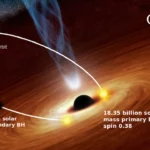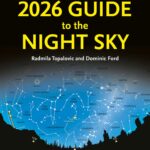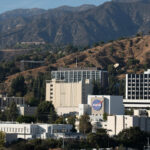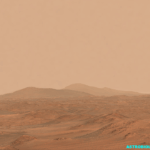Modularity is taking off in more ways than one in space exploration. The design of the upcoming “Lunar Gateway” space station is supposed to be modular, with different modules being
phys.org20- Page
It’s great to see old astronomical observations come to light. Not only can these confirm or refute what’s known about historic astronomical events, but they can describe what early observers
Weather forecasting is a powerful tool. During hurricane season, for instance, meteorologists create computer simulations to forecast how these destructive storms form and where they might travel, which helps prevent
Betelgeuse, the brilliant red star marking Orion’s shoulder, has long been suspected of harboring a secret. I have to confess, Betelgeuse holds a special place in my heart as the
When galaxies collide, it’s not a gentle affair, but it does take millions of years. Over this time, the two massive star systems slowly merge together, their gravitational pull drawing
One of the most notable properties of the giant planets in our solar system—Jupiter, Saturn, Uranus and Neptune—are the extreme winds observed around their equators. While some of these planets
According to a new Physical Review Letters study, black holes could help solve the dark matter mystery. The shadowy regions in black hole images captured by the Event Horizon Telescope
Scientists at the Leibniz Institute for Astrophysics Potsdam (AIP) have uncovered the intricate magnetic heartbeat of a distant star remarkably similar to our own sun—but much younger and more active.
An international team of astronomers has used the Atacama Large Millimeter/submillimeter Array (ALMA) to observe a well-known quasar known as the Cloverleaf. As part of the observations, they serendipitously discovered
Europe must quickly get its own reusable rocket launcher to catch up to billionaire Elon Musk’s dominant SpaceX, European Space Agency director Josef Aschbacher told AFP in an interview.
-
 01From Polymerization-Enabled Folding and Assembly to Chemical Evolution: Key Processes for Emergence of Functional Polymers in the Origin of Life
01From Polymerization-Enabled Folding and Assembly to Chemical Evolution: Key Processes for Emergence of Functional Polymers in the Origin of Life -
 02Panasonic Leica Summilux DG 15mm f/1.7 ASPH review
02Panasonic Leica Summilux DG 15mm f/1.7 ASPH review -
 03How New NASA, India Earth Satellite NISAR Will See Earth
03How New NASA, India Earth Satellite NISAR Will See Earth -
 04And Thus Begins A New Year For Life On Earth
04And Thus Begins A New Year For Life On Earth -
 05Astronomy Activation Ambassadors: A New Era
05Astronomy Activation Ambassadors: A New Era -
06SpaceX launch surge helps set new global launch record in 2024
-
 07Two Black Holes Observed Circling Each Other for the First Time
07Two Black Holes Observed Circling Each Other for the First Time





